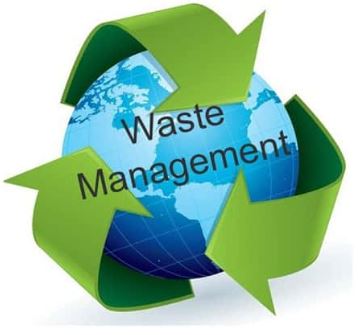As consumers we consume a variety of food stuff and also use many types of clothes, footwear, plastic bottles & containers, polythene carry bag and what not. In offices and markets too there is no control over utility pattern. But majority of us are unaware of the places, thrown up items are supposed to be disposed off, destroyed or burnt. Matter should not end with simply removing urban or municipal waste and dumping the same in a land fill site on the outskirts of a city. What may be unwanted in so called decent pockets should be so in the unpolluted areas too, which accumulate dirt & disease and develop nauseating & unliveable conditions due to unsustainable waste management practices of others.
2) Food ,vegetable & fruit waste and plastic bottles can be considered most common of wastes, be it USA, Europe, China or India. While saying so, one can imagine the plight of people in war ravaged circumstances of Ukraine.
Millions of tonnes of cooked food and fruits go for waste every year. Only in selected cities of India, unused cooked food gets collected at night for distribution among the needy by some welfare minded bodies.
3) It is a fairly long time since we heard about wet waste and dry waste and advocated the need for segregating the two prominent types,at source. Despite repeated instructions people in general do not listen to the concerned authorities and Waste collection vans( WCV) & trucks mostly donot segregate waste, prior to lifting. So its the old way of removal or shifting of waste in a heap.If we are serious, easily available Rag Pickers can lend a helping hand. Another experience is that WCV’s too do not come regularly and that their collection times too differ.

It is not only important to collect, segregate and pick up the rag, it us equally important to disinfect the community dust bins or garbage enclosures. Their sunning and airing should be also a regular task.
4) Through mass media, those involved in cooking are showed / taught how to keep vegetable and fruit waste in one place close to kitchen and enable it to turn into compost over a time. But most of us are not so caring for our environment.Hence, domestic waste is kept in polythene bags and left outside doors to be collected by relatively young fellows, who are only concerned for lifting and not for processing these for future use.This practice too being new, is confined to a few pockets in a town.
5) In most of towns of lower classification, waste dumped in an earmarked location, gets cleared once in a blue moon. In a municipal set up having earmarked Safai Karamcharis, generally house dust bins are emptied into large dustbins kept at a street corner or into the large containers of WCV’s, mostly on a daily basis. But herein also the principle of segregation gets a back seat leading to mixed garbage reaching a Landfill. And as far as latter is concerned ,it is not easy to earmark or acquire land for the reasons of foul smell or stench ,garbage is likely to generate. Wherever Incinerators have been provided, these do not function all the time.
6) Mainly due to reasons described, a millennium city like Delhi or Bengaluru have to bear the burden of more than one dumping place or landfill .When electorate is tired of raising oft repeated issues of corruption and inefficiency in delivery of various services, waste generation rather its scientific disposal becomes the readymade issue of main concern. Waste disposal generally becomes a matter to be raised mainly in small ,unplanned and congested colonies as people of an exclusive zone, such as NDMC may not even know or see the filth of the kind being discussed.
PURPOSE OF WASTE MANAGEMENT
7) Waste management includes processes and actions needed to manage waste from its source to its final disposal point. By reducing waste, we help in preventing pollution and thus preserve and protect the environment. In addition, water contamination and soil erosion issues can be also addressed. And there is nothing like generating energy from it.
Waste management could be considered a strategy to reduce, dispose, reuse and prevent waste by way of composting, vermi-composting,
land fills, incineration and of all, Recycling. First of all, one should endeavour to reduce the garbage that comes out of houses and various establishments. Some garbage can be used again while some has the potential for recycling to create altogether new products or materials.
TYPES OF WASTE
8) Broadly , wastes can be put into four categories: Domestic, Agricultural, Commercial and Industrial. These could be also in the form of animal by products, biodegradable, bio- medical, affluent from factories and chemical and clinical kind.
During the.Covid-19 pandemic, considerable amount of bio-medical waste was generated everywhere but not all the states except Kerala took lead in taking adequate care of it. Also waste from construction & demolition sites ,roads under construction ,vehicles and now electronic waste are adding to the concern in many satellite towns.
COMPOSTING METHOD
9) Composting of kitchen waste or food waste, such as, fruit peels, vegetable ends, egg shells, tea leaves etc are supposed to provide fuel to kitchen garden. Under no circumstances, however, meat & fish scraps, dairy fats, used cooking oil, Charcoal waste, and dog & cat waste should be put in compost bin.
Compost is an organic matter that undergoes a natural decomposition process leading to soil conditioning as also adding nutrients to soil. It takes, on an average, three to six months to produce good and healthy compost. If produced on a large scale, it can be also a good source of organic manure.
LAND FILL SITES
10) Land fill as a site for disposing of waste materials is the oldest and most common method of getting rid of waste. Its harmful effects are however, their production of Methane, Carbon Dioxide, Nitrogen and water vapour. These can adversely impact soil and water resources. All this has a bearing on Climate change. Indiscriminate burning of waste materials adds to air quality index. A time comes when Green House emissions cross conceivable limits and respiratory diseases too register a rise.If located at a distance from urban centres, these can be a good source of urban waste disposal.
DELHI SCENARIO
11)Probably ,keeping this in mind three landfill sites at Ghazipur, Okhla and Bhalswa were developed in the outskirts of Delhi, wherein 10,500 metric tons of garbage is dumped on a daily basis. As these are causing tremendous pollution, foul smell and occasionally catching fire, it has been estimated that their combined garbage of 253 lakh tons will take 197 years to clear. The City Government has reportedly spent Rs 250 Crores already to remove trash from these sites. These are operating beyond their saturation point at the risk of human lives.
12) In Delhi often the height of 73 metres of the Ghazipur site(equal to height of Qutub Minar) is talked about but one should know that the height of garbage dump in the largest site in Rio- de- Janeiro in Brazil is 90 metres and that it is spread over an area of 244 Hectares. The biggest landfill site in the world is, however, located at Las Vegas, USA,. Spread in an area of 2200 acres ,it is expected to last 250 years. On top of it, waste of Noida totalling 550 to 600 tons a day is unfortunately being dumped along Hindon river. One plot in Sector 123 identified for a land fill is not expected to meet the requirement of ever growing city.
EFFORTS AT INDIVIDUAL LEVEL MAY HELP
13) As waste is a substance no longer needed for its intended use, it should be our endeavour to generate least amount of it. After all, waste emanating out of activities indulged in by the human beings takes a long time to decompose. Incidently, gross food waste in China exceeds 91 million tons ,while in India it comes to 68 million tons.One can notice it during the marriages, death ceremonies, office functions and political rallies.
TO SUM UP
14) Waste Management is an emerging issue. Its many aspects are still evolving. Challenges of wide magnitude may appear in this crucial social domain. But these shall have to be resolved if we wish to improve quality of life and save human beings from the onslaught of unwanted diseases.
15) As responsible citizens ,we can reduce food waste by saving leftovers for the next day.We can buy items needing less of packing, stop using polythene carrybags, plastic bottles and styrofoam cups and inculcate the habit of donating clothes. Action shall have to begin at home, followed by our equal concern for neighbouhood and thereafter, whole of town or city. Level of education, awareness and training too may need to be updated from time to time. Regular audit of waste management is also called for so as to contain liquid, solid, gas based, organic and hazardous wastes. Overall, Nagar & Gram Panchayats and media have to be more active than before.

About the Author : Dr. Aaloc Srivastav, Ex CS , Sikkim is a Senior Retd Bureaucrat and passionate about writing on his favourite subjects . The views shared by the author are his personal.




